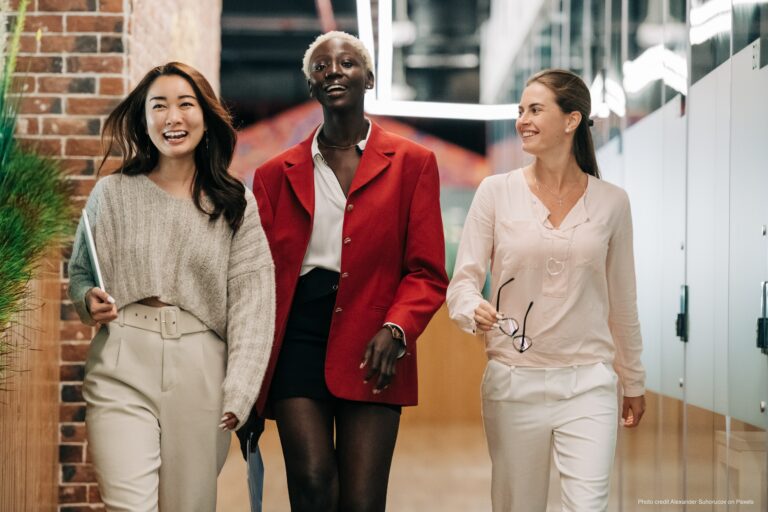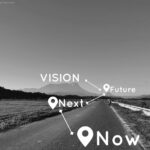Acacia Betancourt: When it comes to designing anything from a report, to an interface, to a website, clients we work with often are fearful about whether or not they are tokenizing others—particularly those with marginalized identities. When I lead design workshops on selecting inclusive images, for example, participants worry that tokenization is a risk in showing diversity (especially racial diversity) in visuals.
I think questions like “Am I tokenizing someone?” and “How do I know if I’m tokenizing?” come from a place of not wanting to do the wrong thing. Generally, no one wants to do unintentional harm by including an image of people. They might ask if what they’re doing is increasing representation or tokenizing, and this can be a fine line. These are really hard questions to answer, and the truth is that the answer is complicated and nuanced. My instinct is that rather than providing a cut-and-dried answer, we should talk through what tokenism feels like and the impact it can have on real people in the workplace.
Mackenzie Price: I understand the “How do I know if I am doing this?” question. But I jump first to the experience of people who are being described as a “token” or “the tokenized.” What we’re talking about are situations that make people feel that they don’t belong. If you’re in an environment that doesn’t feel inclusive or diverse to you, there’s a chance that seeing your face on the front of a brochure can really sting. If someone feels like their organization is using their personal story as a commodity, it stings. People want to feel—and deserve to feel—safe in their workplace. Feeling used in this way can be a sign that you are not able to feel safe because your employer is trying to benefit from who you are and how your presence makes them look.
AB: It blatantly says “You’re a commodity, not a person.”
MP: Feeling dehumanized is disorienting and discouraging to say the least. It can also happen in so many ways. I once had a team that I wasn’t actually on try to have me photographed with them. They wanted me in the picture so that they would appear diverse. It felt manipulative.
AB: Thank you for sharing that. It’s pretty audacious of them to think you would be okay with being in their photo, and it sounds like they didn’t even ask if you wanted to be included. Maybe someone thought it was “inclusive” to invite you, but to someone else that is a big red flag.
When I was working at an agency, a friend of mine shared that this happens to him a lot. He was a Black guy in his 40s and the rest of the staff was mostly white. At one point, they redesigned the About Us page of their website to feature a large photo of my friend. He sort of laughed it off and said something like, “Of course they slap one of the only Black guys who works here at the top. They put me front and center but I don’t even know where this picture came from. Nobody asked me if they could use this.”
He shared that with me, and to my knowledge he never brought it up to HR or to anybody else. I’m sure the person who decided to use his photo thought that the intention of attracting different types of people to their organization was “worth” using his face to accomplish that. The priority was how to present the company’s reputation or brand, not making him (and people like him) feel included and valued. Appearing to be a diverse and equitable workplace doesn’t necessarily help you attract and retain employees from different backgrounds. Instead, when people feel equitably paid, respected, listened to, and valued for what they bring to the table—that’s what actually makes people stay.
MP: The follow-up question that comes to mind is “If I have someone’s permission to use their image, is that better? Is that not tokenizing?”
AB: I’m a big believer in asking them. Make it a conversation. Don’t just slap someone’s face on your marketing materials because you need to look “diverse.” Ask them if they’re okay being featured and be willing to answer their questions or concerns. Make sure to give them credit and make sure their names are mentioned. Get their consent, and accept ‘no’ as an answer if they prefer not to be shown. Offer compensation for being featured in your materials, and build that into your budget.
MP: Completely. Having permission does not change what tokenism is. Having consent for using someone’s likeness is the minimum. It’s always important because we have rights and because images have value. That right there shows the connection to commodifying.
AB: We also can’t escape that it’s a chicken-and-egg problem. To get back to designing a site or a brochure, it is fine to feature a variety of identities (that really is great for increasing representation). But, do it with intention and know why you’re featuring them. If you have a staff or leadership team that is homogenous—entirely white, for example—don’t hide that from external audiences. I’ve gotten that question too, and I advise people to be transparent and honest. You might be embarrassed at a lack of diversity (racial, gender or otherwise) in your organization. That is okay. If you have the desire and a plan to change that part of your organizational culture, that’s great. But you can’t promise your external audiences inclusion when your organization isn’t making authentic efforts internally to work towards true inclusion of everyone.
If you are creating materials with the images, stories, or examples of people in your organization, be ready for the people you’re featuring to ask questions like, “What is this for?” “Why are you choosing to feature me, specifically?” or “How will your featuring me benefit me?” and be prepared to answer those questions.
MP: If you are a person whose image, stories, or examples are being used, it’s very reasonable and valid to have those questions. It’s also reasonable and valid to have any number of emotions—excitement, disinterest, pride, embarrassment, sadness, fear, —about how your story gets told. That emotion might be felt very privately, without anyone really knowing. Even if tokenizing someone is well-intentioned, it has a deep and personal impact. Whether you are experiencing being the only one, one of a few, or from a well-represented identity in a workplace, superficial diversity efforts made by your workplace can impact you on a deep and profound level.
AB: At the end of the day tokenizing people and the experience of being a “token” of diversity are the byproducts of institutions only making small changes. In order to make true change in your organization and in the world, you have to do deeper organizational work than just tokenizing someone for the sake of making your organization look like it’s inclusive. There is no shortcut.









